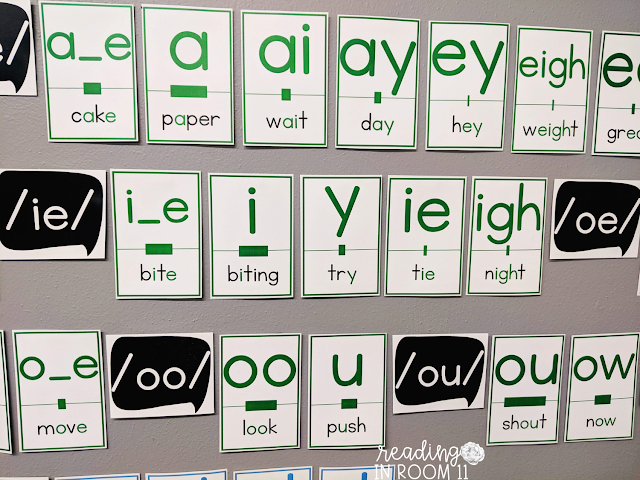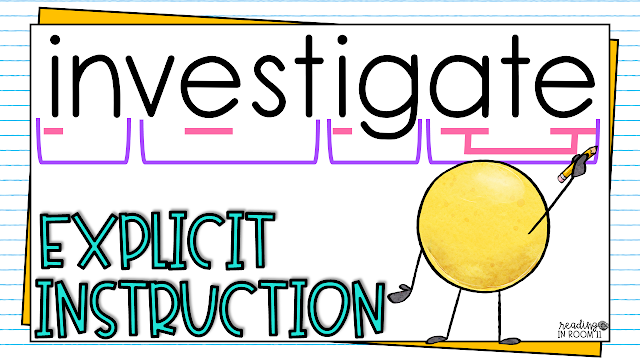Why is it important to teach the six syllable types?
Teaching students the syllable types will allow them to break up larger words into more manageable parts - no more looking at the first few letters and guessing! Here is the framework you can use in your reading groups to teach the six syllable types!Step 1: Warm Up
I use a two-part warm-up! The first part is the one-minute phonological awareness activities from David Kilpatrick’s Equipped for Reading Success. The second part is a quick warm-up of word parts with the syllable type we are working on.Step 2: Sound Review
Vowels can make so many sounds! We reference our code charts to review the most common vowel sounds within a specific syllable type.Step 3: Chaining (or Explicit Instruction)
When we are just learning a syllable type, step 3 is always chaining. Chaining is a sequence of words built by changing one sound at a time. For example, if we are working on Bossy R, I would have the students make the word /porch/and then ask them to change a sound to that /porch/ says /perch/. Next, they would shift a sound so that /perch/ says /perk/.Step 3: Explicit Instruction (or Chaining)
When students have a more solid understanding of a syllable type, step four is always explicit instruction. This is one of my favorite parts because it engages students in conversations about how the syllable types work and how sounds don’t follow the rules.During this step, I have a word on the board, and students have the same word in front of them. I underline the vowels and then scoop the word for them, and then they copy my work onto their paper. Next, we review each vowel sound and word part and read the whole dish.
Step 4: Word Reading
It is time for them to use the skills we learned in the explicit instruction section! I give them a set of decodable multisyllabic words using the vowel team that we are working with. They underline and scoop the terms and then practice reading them after I have checked them over.Step5: Dictation
Once we have finished word reading, we move on to dictation (encoding practice)! We use the skills that we have practiced in steps 1-5 and apply them to writing. Sound boxes are a powerful tool for this section.Step 6: Reading in Context
Now it is time to put all of these skills to the test and read! Finding a decodable text that incorporates the skills you have been working on is essential. I mainly use readers from Core Knowledge Language Arts (CKLA) and SPIRE Readers. The CKLA materials are free!Are you ready to get started?
This format for teaching the six syllable types has benefited my students in grades 3-5. If you are ready to teach your students how to decode multisyllabic words, click here and get 78 lesson plans for each syllable type and a mixed review. This also includes teachers' directions, student packets, Google Slides warm-up, pre/post assessments, individual syllable type assessments, and a Google Slides guide to explicitly teach students how to underline and scoop words.Pin for later:











